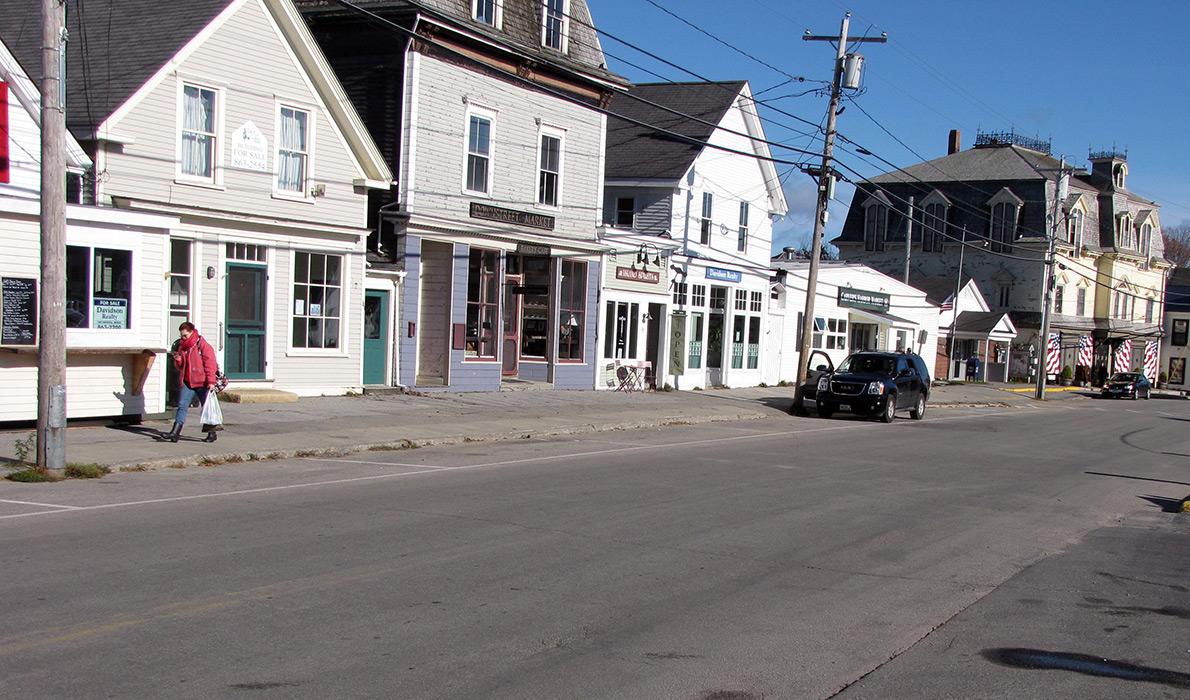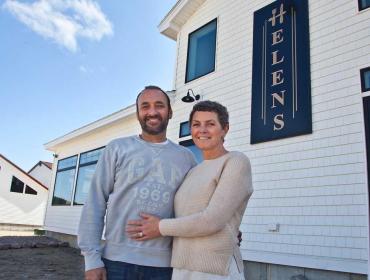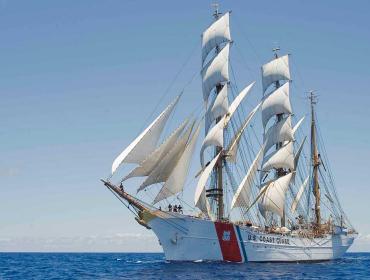Posted January 20, 2016
Last modified January 20, 2016
Vinalhaven often experiences big storms. That’s not surprising. We are, after all, an island in the middle of the ocean.
Some of those storms are particularly ferocious. Back in the 1950s, the accompanying high tide swept across Main Street several times and flooded a couple of stores on the opposite side of the street. One of those was MacIntosh Grocery.
One-hundred and fifty years ago, Carver’s Harbor was three times as big as it now. Its northern two-thirds was a broad expanse extending inland and separated from the outboard third by a channel about 300 yards wide. Big ships routinely navigated back and forth through an area now confined to rowboats or small outboards traveling under the Main Street bridge.
A large part of the island population lived on the west side of the Harbor then; the other half lived on the east. As the availability and value of Vinalhaven granite became apparent, quarrying grew at a frantic pace and, in the process, created mountains of residual rubble (known in the business as grout).
It wasn’t long before the more imaginative members of these two communities, on the east and the west, saw the wisdom of bridging the 1,000-foot channel to afford greater interaction, combined services such as fire protection, and commerce between the two. The alternative, until then, had been to boat across or to travel way inland and around the northern two thirds of the Harbor to reach those living on the opposite shore.
The grout was the answer. It was—and remains—an inexhaustible resource and they began depositing it in the channel from either side, but mostly from the western shore, advancing toward one another as the isthmus grew until the remaining channel was only 100 feet wide. They bridged this with structural granite, laid a gravel road from the east to the west and Main Street was born.
The southern third of Carver’s Harbor became the entire thing; the northern two-thirds became Carver’s Pond and in no time Main Street was Vinalhaven’s public face, the bustling center of commerce, and an architectural wonderland, with four stately Victorian mansions housing every imaginable retail activity and several fraternal associations.
The isthmus was well-built and functional—it’s completely intact today—but moderately irregular, such that MacIntosh Grocery and several adjacent buildings built on the north grout bank were—that is their first-floor levels were—a foot or so lower than the surface of Main Street. When the big storms hit or were clearly about to hit, proprietor Andy Gilchrest rounded up a couple of kids to help remove merchandise up and off the floor to keep it out of the water as the tide swept across Main Street, into the store and out the back into Carver’s Pond.
Since then, many successive layers of asphalt have been laid on Main Street. The result is that its surface is quite a bit higher than it was when I last responded to Andy’s call for help in 1956.
Storm surges no longer cover Main Street. That might lead the more skeptical among us—and has, in fact, led some—to conclude sea levels are, rather than rising, perhaps falling. In truth, were we to take note, the reliable average sea level in the 1950s was several inches lower than it is today and the rising tides are gaining on the rising level of asphalt.
Toward that end, rising sea levels and climate change should be—and I think will be—the most important item on the Vinalhaven selectmen's agenda.
Phil Crossman owns and operates the Tidewater Motel on Vinalhaven, and serves as a selectman.

Contributed by




